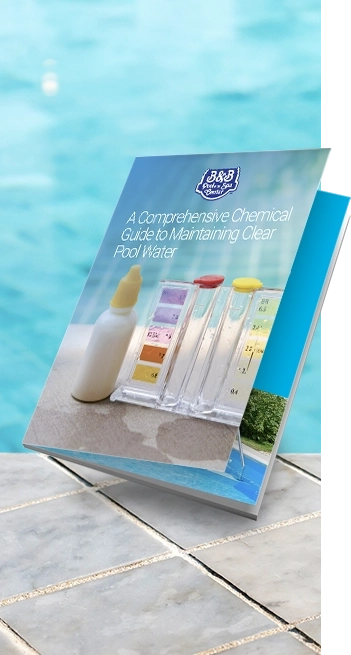Troubleshooting Cloudy Pool Water: Common Causes and Fixes
Blog
Few things are more disappointing to a pool owner than stepping outside to find the water looking dull, hazy, or downright cloudy. Not only does cloudy water take away from the beauty of your pool, but it can also pose real concerns for safety and sanitation. When the water isn’t crystal-clear, swimmers can’t see the bottom of the pool, which increases the risk of accidents. On top of that, cloudiness often signals an imbalance or problem with the filtration system, water chemistry, or even the environment around the pool.
The good news is that cloudy pool water is a common issue, and one that can usually be fixed with a systematic approach. By identifying the underlying cause and applying the right solution, you can restore sparkling clarity to your pool and keep it that way.
What Causes Cloudy Pool Water?
Cloudy water doesn’t appear out of nowhere; there’s always an underlying reason. Understanding the most common causes is the first step toward restoring clarity. From filtration problems to chemical imbalances, weather, and algae growth, several factors can contribute. Let’s break down the main culprits that make pool water lose its sparkle.
Cloudy Pool Water Caused by Poor Filtration
Your filtration system is the heart of your pool’s circulation. If it isn’t working properly, small particles and debris will remain suspended in the water, leading to cloudiness. Common filtration issues include:
- Dirty or clogged filter: A filter that hasn’t been cleaned or backwashed is far less effective at trapping debris.
- Insufficient pump run time: If your pool pump doesn’t run long enough each day, water won’t circulate through the filter often enough to stay clear.
- Old or worn filter media: Sand, cartridges, and DE filters all lose efficiency over time and may need replacement.
Different filtration options for pools vary in effectiveness, and choosing the right one plays a role in maintaining clear water.
Chemical Imbalances That Make Pool Water Cloudy
Chemistry plays a huge role in water clarity. When levels are off, particles that should be dissolved or filtered out may remain suspended, giving the water a cloudy appearance. Some common culprits include:
- Low chlorine levels: Without enough sanitizer, bacteria and algae multiply quickly, leading to hazy water.
- Incorrect pH or alkalinity: If either level is too high or too low, chlorine won’t work effectively, and minerals in the water may precipitate.
- High calcium hardness: Excess calcium can lead to scaling and cloudy deposits.
- Too much stabilizer (CYA): High cyanuric acid reduces chlorine’s effectiveness, making it harder to keep the water clean and clear.
Issues like these often go hand in hand with other chemistry challenges, such as the presence of phosphates in pool water.
Environmental and Weather-Related Causes
Sometimes, the problem isn’t inside the pool system at all—it’s what’s happening around it. Common environmental factors include:
- Debris and pollen: Wind can carry in dust, dirt, and pollen that cloud the water.
- Heavy swimmer load: Oils, sweat, sunscreen, and lotions all add to water contamination.
- Rainstorms: Rain can dilute chemicals, introduce phosphates, and stir up debris.
Severe weather can have a major impact on water quality, and preparing your pool for storms helps reduce cloudiness afterward.
Early Signs of Algae Growth
Algae growth often begins subtly. Before it turns green, yellow, or black, algae can cause water to look dull and hazy. If sanitizer levels are low and the pool is exposed to sunlight, algae can take hold quickly. What may seem like harmless cloudiness could actually be the first sign of a bloom. Preventive measures such as regular brushing and consistent sanitizer levels are key parts of managing algae control.
How to Fix Cloudy Pool Water
Once you know why your pool looks cloudy, the next step is taking action. Fixing murky water isn’t complicated if you follow a systematic approach. By testing, balancing, cleaning, and filtering properly, you can bring back that crystal-clear look and keep your pool safe and inviting.
Step 1: Test Pool Water Accurately
The first step in solving cloudy pool water is diagnosis. Without testing, you’re simply guessing at the cause. Use a reliable home test kit—or better yet, bring a water sample to your local pool professional for a complete analysis. Make sure to check:
- Free chlorine
- pH
- Total alkalinity
- Calcium hardness
- Cyanuric acid (CYA)
Step 2: Balance Chemicals and Shock the Pool
Once you know where the water stands, it’s time to correct imbalances:
- Shock the pool: If chlorine is low, add a shock treatment to quickly raise sanitizer levels and kill bacteria or algae.
- Adjust pH and alkalinity: Aim for a pH between 7.2–7.6 and alkalinity between 80–120 ppm.
- Address calcium hardness: Keep levels between 200–400 ppm to prevent scaling or cloudiness.
- Use a clarifier or flocculant: Clarifiers help bind small particles so the filter can remove them. For severe cloudiness, a flocculant will clump particles together and drop them to the pool floor for vacuuming.
Balancing chemicals is especially important during seasonal transitions, such as when opening your pool for swim season.
Step 3: Clean and Improve Pool Filtration
Chemicals alone can’t do the job—filtration is critical. Take the following steps:
- Backwash or clean the filter: This removes built-up debris and restores efficiency.
- Run the pump longer: Most pools need at least 8–12 hours of circulation daily during swimming season.
- Check for wear: Replace old sand, cartridges, or DE grids if they’re no longer effective.
Step 4: Remove Debris and Organic Contaminants
Even with balanced water and a clean filter, physical debris can contribute to cloudiness. Make cleaning part of your routine:
- Skim daily: Remove leaves, bugs, and floating debris before they sink.
- Vacuum the floor: Manual or automatic vacuums help remove what the filter misses.
- Brush walls and steps: Algae and fine particles often cling to surfaces.
- Control the environment: Trim trees, manage landscaping, and use a pool cover to reduce contamination.
Seasonal upkeep such as spring cleaning your swimming pool can go a long way toward avoiding mid-season cloudiness.
How to Prevent Cloudy Pool Water
Prevention is always easier than troubleshooting. By keeping up with a regular maintenance routine, you can avoid cloudy water altogether:
- Test and balance weekly: Make sure chlorine, pH, alkalinity, calcium, and CYA stay in the right range.
- Run the pump daily: Circulate the entire pool volume at least once every 24 hours.
- Shock after heavy use or storms: Extra swimmers or rain add contaminants that need to be addressed quickly.
- Clean consistently: Skim, vacuum, and brush on a set schedule.
- Schedule professional service: A trained eye can spot problems before they become major headaches.
Technologies like automation also help simplify care, and the benefits of automating your pool include better consistency in preventing cloudy water.
Clear Water, Healthy Swimming
Cloudy pool water may seem mysterious at first, but it always has an explanation—and a fix. Whether the cause is poor filtration, chemical imbalance, environmental debris, or early algae growth, clarity can be restored with a step-by-step approach. Test the water, balance the chemistry, clean the filter, and remove debris.
More importantly, prevention through consistent maintenance ensures that cloudy water won’t become a recurring problem. A pool that is clear, balanced, and well-maintained offers both beauty and safety for everyone who enjoys it. If cloudy water keeps coming back or you’d prefer expert care, you can schedule a pool cleaning with us and let our team handle the hard work for you.


